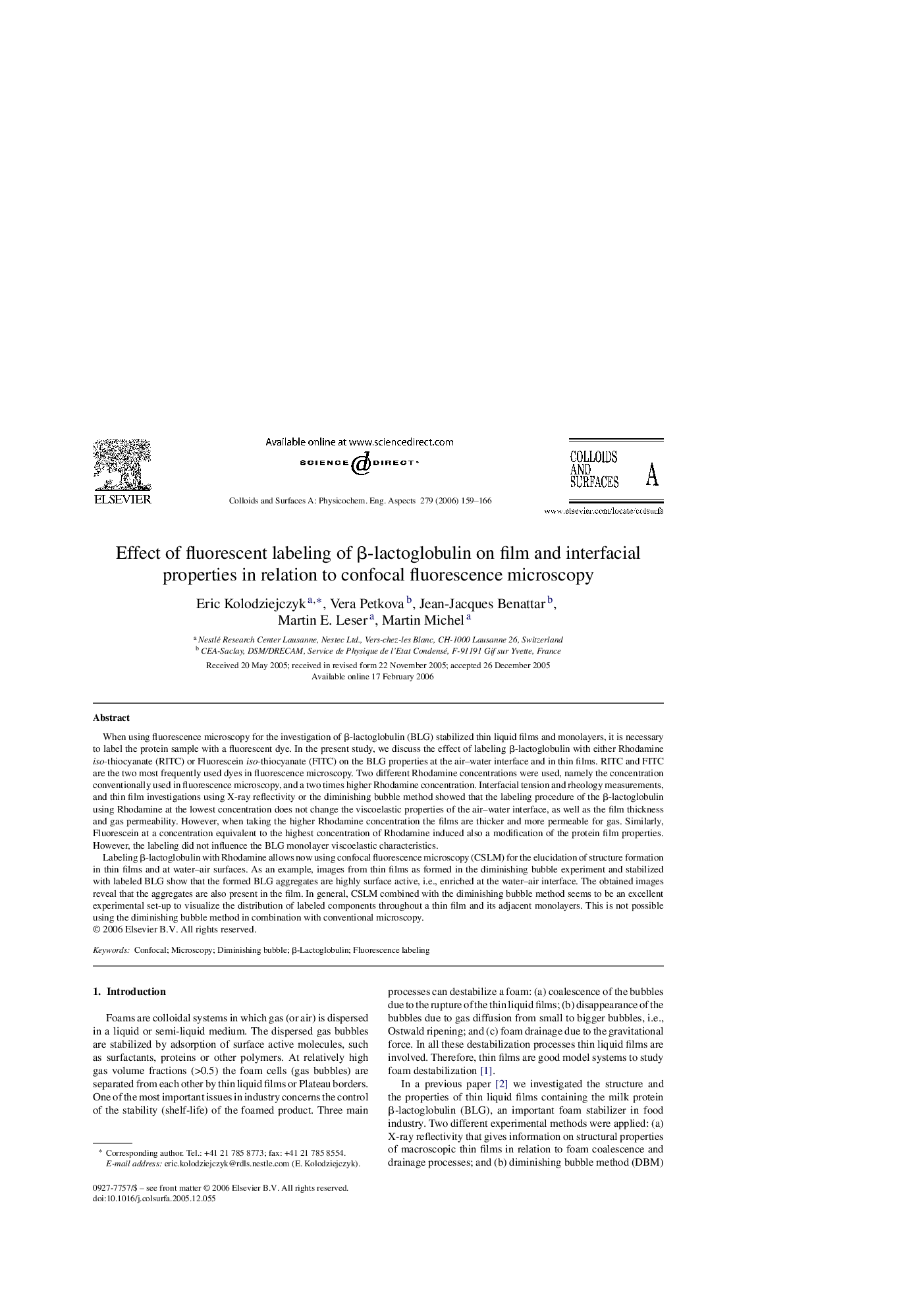| Article ID | Journal | Published Year | Pages | File Type |
|---|---|---|---|---|
| 598441 | Colloids and Surfaces A: Physicochemical and Engineering Aspects | 2006 | 8 Pages |
When using fluorescence microscopy for the investigation of β-lactoglobulin (BLG) stabilized thin liquid films and monolayers, it is necessary to label the protein sample with a fluorescent dye. In the present study, we discuss the effect of labeling β-lactoglobulin with either Rhodamine iso-thiocyanate (RITC) or Fluorescein iso-thiocyanate (FITC) on the BLG properties at the air–water interface and in thin films. RITC and FITC are the two most frequently used dyes in fluorescence microscopy. Two different Rhodamine concentrations were used, namely the concentration conventionally used in fluorescence microscopy, and a two times higher Rhodamine concentration. Interfacial tension and rheology measurements, and thin film investigations using X-ray reflectivity or the diminishing bubble method showed that the labeling procedure of the β-lactoglobulin using Rhodamine at the lowest concentration does not change the viscoelastic properties of the air–water interface, as well as the film thickness and gas permeability. However, when taking the higher Rhodamine concentration the films are thicker and more permeable for gas. Similarly, Fluorescein at a concentration equivalent to the highest concentration of Rhodamine induced also a modification of the protein film properties. However, the labeling did not influence the BLG monolayer viscoelastic characteristics.Labeling β-lactoglobulin with Rhodamine allows now using confocal fluorescence microscopy (CSLM) for the elucidation of structure formation in thin films and at water–air surfaces. As an example, images from thin films as formed in the diminishing bubble experiment and stabilized with labeled BLG show that the formed BLG aggregates are highly surface active, i.e., enriched at the water–air interface. The obtained images reveal that the aggregates are also present in the film. In general, CSLM combined with the diminishing bubble method seems to be an excellent experimental set-up to visualize the distribution of labeled components throughout a thin film and its adjacent monolayers. This is not possible using the diminishing bubble method in combination with conventional microscopy.
